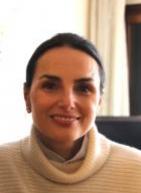While countries around the world are experiencing dramatic declines in economic activity as a result of the global COVID-19 pandemic, academic economists seem to have accelerated their production of research papers. Undoubtedly, the COVID-19 shock has provided economists with an unprecedented opportunity to study the different economic and social implications of drastic policy measures that were unthinkable only a few months ago. But who are the economists exploiting this opportunity? Our analysis suggests it is neither women nor midcareer economists.
It is widely recognised that a confluence of factors has created an unfavourable environment for women in the labour market. In an early contribution, Alon et al. (2020) find that lockdown measures are expected to disproportionately reduce women’s labour productivity in the short run. Adams-Prassl et al. (2020) find evidence that since lockdown measures started, women in the US, the UK, and Germany are spending more time on active childcare and home schooling than men. In the time of COVID-19, economists in research positions are an interesting group to study, because they face very low risk of employment loss due to the pandemic, and are expected to continue to conduct research, teach, and carry out their administrative duties from home. Female economists with young children in lockdown may be struggling more than men. In a recent article published in Nature, Alessandra Minello offers a humorous but vivid commentary on the life of the female academic during lockdown.
The impact of COVID-19 measures on women’s research productivity
It is common practice in economics to disseminate research in the form of working papers that have the structure of fully developed peer-reviewed papers. We explore the patterns of working-papers publications using data from prominent repositories of such output. Our preliminary analysis (Amano-Patino et al. 2020) suggests that the productivity of female and, more generally, midcareer research economists has been disproportionately affected by the lockdown measures. It is mostly senior male economists who are currently exploiting the myriad research questions arising from the COVID-19 shock.
We draw these results by collecting titles of papers or research columns, as well as author names, from four separate sources. The first two are the National Bureau of Economic Research (NBER) Working Papers Series and the Centre of Economic Policy Research (CEPR) Discussion Paper Series. For each, we cover the first four months of the year for the last six years (January to April, 2015 to 2020).1 Next, we use a novel dataset of all submissions to the newly established preprint of Covid Economics: Vetted and Real Time Papers, kindly provided by CEPR, up to and including Issue 9. Last, we extract author seniority information from VoxEU columns in the first four months of the last two years (2019 and 2020).2
Figure 1 NBER and CEPR WP Series
Source: NBER, CEPR, and authors’ calculations.
The first four months of 2020 saw 798 distinct working papers, of which a very large number appeared in March and April 2020. In contrast, the four-month average for 2015-2019 was 606 papers, highlighting a substantial increase in research activity in recent months. At the same time, the proportion of female authors in the four-month window remained comparable to the last five-year average, at approximately 20%.3
However, while the relative number of female authors in non-pandemic related research has remained stable with respect to recent years, women constitute only 12% of the total number of authors working on COVID-19. These facts, summarised in Figure 1, suggest that while female researchers have managed to continue working on ongoing research and keep up with the recent growth of research activity, they have been less willing or less able to contribute to the budding literature on the economics of pandemics.
Who is working on research related to the COVID-19 pandemic?
To explore these ideas further, we next focus only on current research activity related to COVID-19. In Figure 2, we show the number of female authors broken down by data source (NBER, CEPR, CEPR Covid Economics, and VoxEU). The evidence is stark: As a fraction of all authors, women constitute 17.4% for NBER working papers, 4.8% for CEPR working papers, 10% in papers that were submitted to CEPR Covid Economics (with only 6.8% for papers that have been accepted and published as of 26 April 2020), and 17.8% in VoxEU columns. Combining all datasets and removing work that appears in more than one outlet, the proportion of female authors working on research related to the pandemic is 14.6%.4 All these numbers are considerably lower than the average of about 20% female authors found in normal times in CEPR and NBER working-papers series.
Figure 2 Breakdown of COVID research activity by source and gender
Note: Numbers in white are numbers of female authors.
Source: Covid Economics: Vetted and Real Time Papers, CEPR, NBER, VoxEU Columns, and authors’ calculations.
We also do a more nuanced decomposition of the authors that have contributed to COVID-19 related research. Looking at seniority, we see that it is primarily senior economists who are contributing to this new area. Meanwhile, midcareer and junior economists record the biggest gap between non-COVID and COVID research, and additionally the gender differences are particularly stark at the midcareer level. Midcareer female economists have not yet started working on this new research area: only 12 midcareer female authors have contributed to COVID-19 related research so far, out of a total of 647 distinct authors in our dataset of papers (NBER, CEPR, and CEPR Covid Economics).5
For comparison, Figure 3 shows seniority breakdowns for contributors to VoxEU columns in the first four months of 2019, as well as contributors to VoxEU columns unrelated to the pandemic for the first four months of 2020. These numbers highlight even more the absence of junior, midcareer, and female researchers from COVID-19 discussions.
Figure 3 VoxEU authors by seniority and gender
Note: Numbers in white are numbers of female authors.
Source: VoxEU columns and authors’ calculations.
Why are female economists not working on COVID-19 research?
Junior and midcareer female economists are more likely to be heavily involved in both professional and administrative (i.e. non-research related) duties, while also probably tending to families with young children during the pandemic lockdowns. Additional explanations can be found in the inherent differences between the research approaches of female and male academics. Female academics are more risk averse and may be less willing to start new projects with such a short notice, especially if the topic is inter-disciplinary.6 All the above may preclude them from investing in new high-cost research as opposed to finishing off work in progress, for which most of the fixed cost was incurred before the pandemic.
Also, female academics tend to produce fewer papers than men. Hegel (2020) argues that female economists face a trade-off between quality and quantity due to higher standards demanded of female authors. This makes them spend more time on reviewing and polishing older research than on generating new ideas, in line with the current experience of research on the economics of COVID-19. A recent volume published by VoxEU (Lundberg 2020) offers a summary and explanations of known factors that contribute to the productivity gap between female and male economists.
Conclusion
The COVID-19 crisis has spurred a fast-growing new field in economic research. Female economists have not been as fast in reacting to the new research challenge as their male counterparts, and this seems due to a combination of unfortunate coincidences.
We believe that the adverse effects of lockdowns on the division of labour at home have been detrimental to the research activity of all parent midcareer economists, and especially women. In addition, women are more averse to risk and more cautious about how they approach research. Therefore, it seems that whenever they can set aside time to work on their research, that time is largely devoted to completing well-developed work within their comfort zone.
Going forward, we will continue to update and analyse these datasets along the lines presented here, and augment it to include variables relating to parenting, as we acknowledge that parenting has negative effects on productivity for both female and male researchers.
References
Adams-Prassl, A, T Boneva, M Golin and C Rauh (2020), “Inequality in the Impact of the Coronavirus Shock: Evidence from Real Time Surveys”, Cambridge-INET Working Paper.
Alon, T, M Doepke, J Olmstead-Rumsey, M Tertilt (2020), “The Impact of Covid-19 on Gender Inequality”, CEPR Covid Economics, Issue 4.
Amano-Patino, N., E. Faraglia, C. Giannitsarou and Z. Hasna (2020) “The Unequal Effects of COVID-19 on Economists Research Productivity”, Cambridge-INET working paper.
Eckel, C and P Grossman (2008), “Men, Women and Risk Aversion: Experimental Evidence” Handbook of Experimental Economics Results, Vol. 1, Ch. 113.
Lundberg, S (2020), “Women in Economics”, VoxEU.org eBook.
Hegel, E (2020), “Publishing while Female. Are women Held to Higher Standards? Evidence from Peer Review”, mimeo, University of Liverpool and in VoxEU.org eBook, “Women in Economics”.
Minello, A (2020), “The Pandemic and the Female Academic”, Nature, 17 April, doi: 10.1038/d41586-020-01135-9.
Endnotes
1 We focus on the same four months of each year to avoid seasonal research activity effects.
2 We included VoxEU.com columns published up to and including 27 April 2020.
3 For this we used two different metrics, namely (i) the total number of distinct authors, where each author is counted only once in the whole data set and (ii) the total number of all authors, where each author is counted as many times as the number of distinct papers they have contributed to. The percentages for both metrics are very similar.
4 The large difference in the share of women between the NBER and CEPR working paper series may be due to the fact CEPR also publishes the newly established Covid Economics: Vetted and Real Time Papers. The online publication aims to collect formal investigations of the crisis based on theory and empirical evidence. Submitted papers go through a quick peer review by the editorial board and can be accepted or rejected rather than go through the usual lengthy revision process of journal publications. Authors do not have to be affiliated to CEPR. The series is an instrument to quickly disseminate on-going and preliminary work on the pandemic.
5 Our definition of midcareer is academics that are Associated Professors, Senior Lecturers, or Readers and standard metrics of seniority for other institutions.
6 There is a wide range of experimental and survey evidence that supports the view that women are less willing to take risks than men and are more averse to ambiguity (e.g. Eckel and Grossman 2008).







